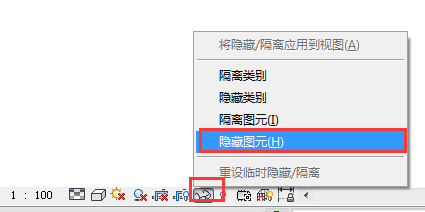
下载app免费领取会员


When it comes to architectural design and construction, one term that often comes up is "Revit Curtain Wall." However, upon closer examination, it becomes apparent that the title itself may not accurately represent the true essence and capabilities of this architectural feature.
A curtain wall, traditionally, refers to a non-load bearing exterior wall that is attached to a building's structural framework. It typically consists of glass panels held in place by aluminum frames and is designed to provide aesthetic appeal, natural light, and insulation.
Revit, on the other hand, is a powerful Building Information Modeling (BIM) software that allows architects, engineers, and designers to create and manage building designs in a virtual environment. It facilitates collaboration, improves accuracy, and helps streamline the entire construction process.
So, when we talk about "Revit Curtain Wall," we are not merely referring to the physical manifestation of a curtain wall, but rather the integration of this architectural feature within the Revit software.
By utilizing Revit's curtain wall tools, architects can design, analyze, and simulate the behavior of curtain walls directly within the software. They can easily customize the dimensions, materials, and visual properties of the curtain wall to match the specific requirements of the project. The software also allows for the inclusion of various components such as mullions, panels, and connection details.
But the capabilities of Revit curtain walls extend beyond just their visual representation. The software enables architects to perform accurate energy analysis, identify potential performance issues, and optimize the design for energy efficiency. It also facilitates the integration of other building systems such as HVAC, plumbing, and electrical, ensuring a comprehensive and coordinated approach to construction.
So, instead of confining the term "Revit Curtain Wall" to a mere description of a building facade, it should be viewed as a testament to the power and versatility of the Revit software in integrating complex architectural elements into the digital design process. It showcases how technology is revolutionizing the way architects and designers approach building construction, making it more efficient, sustainable, and aesthetically pleasing.
In conclusion, the title "Revit Curtain Wall" should be revised to accurately reflect the combination of advanced architectural design with the capabilities of the Revit software. It is not just about creating a physical curtain wall but leveraging the power of technology to enhance the entire construction process.
.jpg)
本文版权归腿腿教学网及原创作者所有,未经授权,谢绝转载。

- Revit技巧 | Revit与DWG的链接
- Revit技巧 | 设置Revit导出的IFC文件为主文件级别
- Revit技巧 | 如何在Revit中设定项目基准点
- Revit技巧 | 查看Revit模型的体积
- Revit技巧 | Revit安装时出现授权系统错误1?Revit出现授权系统错误1怎么办?
- Revit技巧 | 如何在Revit中设置桥架的颜色?
- Revit技巧 | Revit如何查看模型?关于Revit查看模型的几种方式
- Revit技巧 | Revit风管连接风口怎么做?Revit中如何在风管上开洞焊接支管与风口
- Revit技巧 | BIM插件有什么作用?提高Revit机电建模必不可少的插件
- Revit技巧 | Revit官方教程丨按图元显示隐藏线
















































